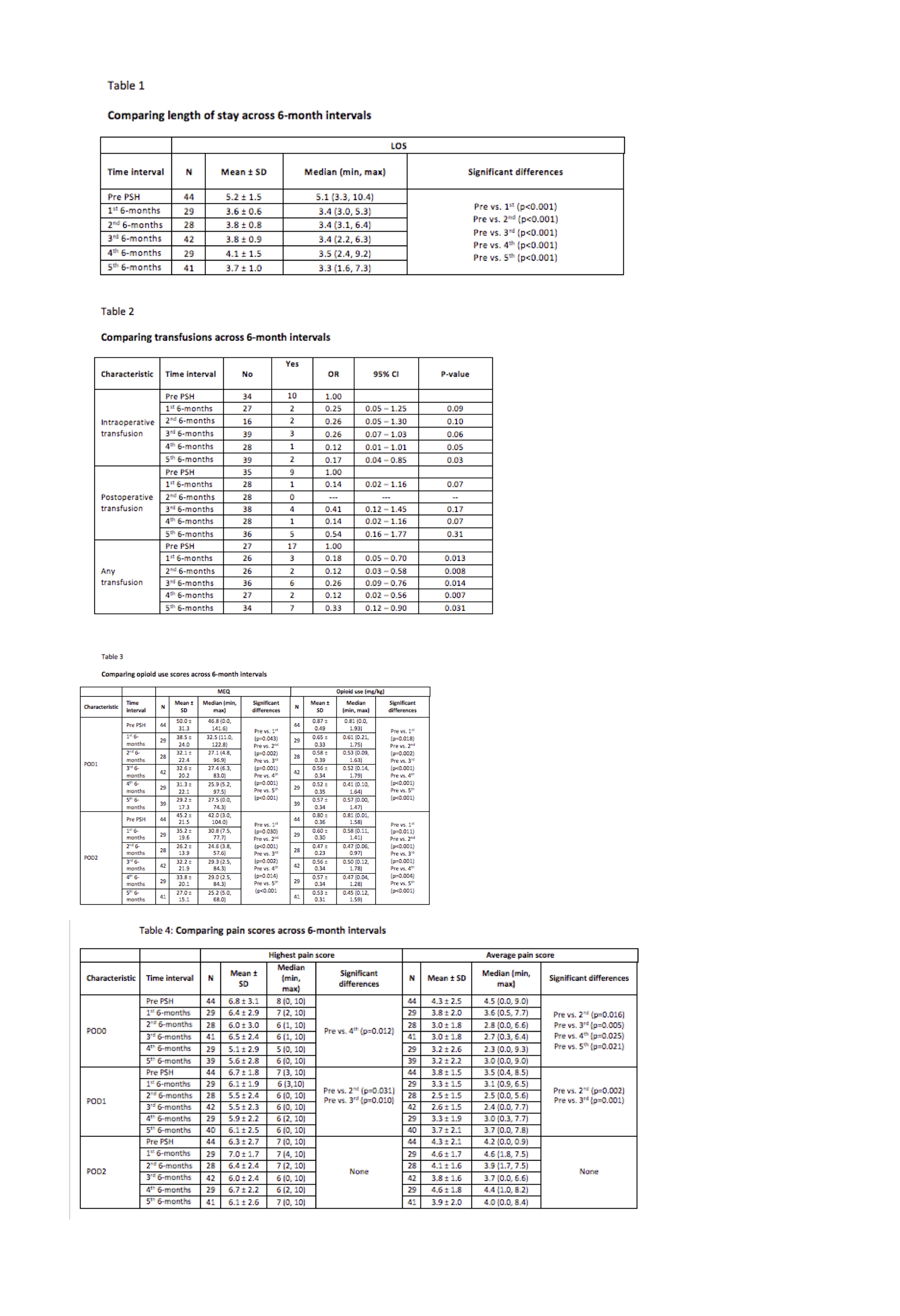OS2-150
The Perioperative Surgical Home: A sustainable model for providing high quality care for pediatric patients undergoing posterior spinal fusion for adolescent idiopathic scoliosis.
Lin C, Pestieau S, Cronin J, Thomson K, Oetgen M, Gordish-Dressman H, Martin B, Khan N
Children's National Medical Center, Washington, DC, United states
Purpose: The Perioperative Surgical Home (PSH) has been utilized in many institutions to improve the care of adults undergoing surgical procedures. A PSH model was developed by a multidisciplinary team at our pediatric institution to improve the quality of care for patients with adolescent idiopathic scoliosis (AIS) undergoing posterior spinal fusion (PSF). It was implemented in March 2015, and within 6 months led to a significant reduction in length of stay (LOS), need for perioperative blood transfusion, post-operative opioid use, and pain scores. However, in practice, it can be difficult to maintain high-quality outcomes after the initial intervention. Since the PSH has been in place for over 2 years, we here aim to assess whether our original results were sustained over time.
Methods: Operative and postoperative variable of patients with AIS undergoing PSF at a single pediatric institution pre and post-PSH implementation were retrospectively compared. The pre-PSH group consisted of patients who underwent surgery between July 1, 2014 and March 4, 2015. The PSH group included patients between March 5, 2015 and July 31, 2017. Within the PSH group, patients were grouped in 5-six month intervals and compared to the pre-PSH group, for LOS, need for perioperative blood transfusion, post-operative opioid use and pain scores. Data was analyzed using the Shapiro-Wilk normality test, linear regression models for normally distributed continuous variables, Wilconxon rank sum test for non-normally distributed continuous variables, and Fischer’s exact test for categorical variables.
Results: A total of 169 patients were enrolled in the PSH, and were compared to 44 patients in the pre PSH group. Patients enrolled in the PSH exhibited significantly decreased LOS compared to pre-PSH patients, and this was sustainable across all 6-months cohorts (Table1). Similarly, the need for perioperative blood transfusion was consistently significantly lower in the PSH patients (Table 2). In regards to pain related outcomes, daily opioid use was significantly reduced over time (Table 3), and there was a significant decrease in the highest and average pain scores reported on postoperative days 0 and 1 in most of the PSH cohorts (Table 4).
Conclusion: The implementation of PSH for patients with AIS undergoing PSF has significantly improved perioperative outcomes in patients undergoing PSF leading to decreased LOS, lower perioperative transfusion requirements, reduced postoperative pain scores and daily opioid use. Notably, these outcomes have been maintained over 2 ½ years, indicating the PSH is a sustainable model for providing high quality care for pediatric patients with AIS undergoing PSF.
Reference: Thomson K, Pestieau SR, Patel JJ, Gordish-Dressman H, Mirzada A, Kain ZN, Oetgen ME. Perioperative Surgical Home in Pediatric Settings: Preliminary Results, Anesth Analg. 2016 Nov;123(5):1193-1200
Top












